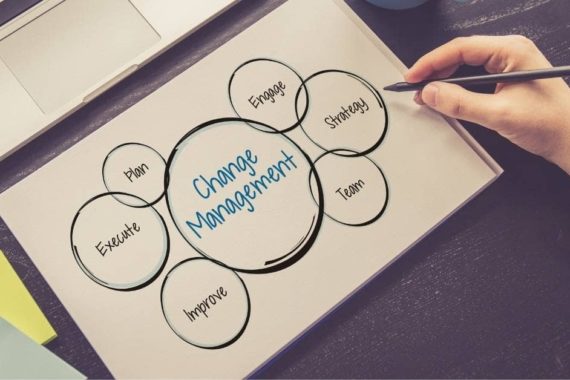
Introduction
A Contract Management System is used by companies that need to manage contracts related to their business operations. The system is designed to ensure contracts’ proper functioning and provide a central point of access for all parties involved in a contract. Its purpose is to maintain organization and efficiency in the creation, review, approval, execution, and administration of contracts.
If the Contract Management System is not implemented properly, it can have a detrimental effect on your company.
If you are a business owner, you will know how important it is for your organization to have contracts in place. Without a proper contract management system, it can be difficult for organizations to run efficiently. The following are some of the benefits that you can expect from implementing a Contract Management System:
- A well-managed approach helps keep track of all the agreements made during operations and allows businesses to gain insights into their performance
- Useful information about contracts can be extracted from the database which can help companies make better decisions based on facts rather than assumptions
- It reduces risk by providing clear information about each contract signed so that parties involved in them understand what they’re getting themselves into
The Contract Management System is an important process for organizations that rely on contracts in their operations.
The Contract Management System is an important process for organizations that rely on contracts in their operations. Contracts play a significant role in the business of any organization, whether it’s a small company or a large corporation. They can be a major source of revenue for the organization and also serve as a legal document to protect its interests.
A contract management system helps organizations manage all the contracts that are issued by them, received from their customers and partners, as well as those already signed by them. It tracks when such contracts were initiated, executed, and terminated so that you can keep track of them at every step along with details such as approval dates and signatures made on each one of these documents by different parties involved in them (e.g., buyers, sellers).
With this type of information being recorded electronically using software designed specifically for this purpose (i.e., contract management software), it helps both sides involved ensure compliance with terms set forth within contracts while avoiding disputes arising out of disagreements over what was agreed upon during negotiations between two parties involved
In essence, the Contract Management System entails processes for maintaining organization and efficiency in the creation, review, approval, execution, and administration of a contract.
In essence, the Contract Management System entails processes for maintaining organization and efficiency in the creation, review, approval, execution, and administration of a contract.
It’s important to note that this is not just any standard contract management process. There are several ways you can approach your own system: from a global view or from a more granular perspective; by using one integrated software solution or using several different tools; or by integrating with existing systems for better data sharing. Your choice depends on your business needs and the resources available.
However, you decide to implement it though – whether you choose an all-inclusive solution like SAP Altum or opt for something less robust – having some sort of formalized procedure will help ensure that everything runs smoothly from start to finish without any hiccups along the way.
The parts of the Contract Management System, are as follows – Creation, Review and Approval, Execution, Protection and Control, Evaluation and Report
The parts of the Contract Management System, are as follows –
- Creation: This is the first phase of a contract life cycle. In this phase, you can start working on creating an agreement with your customer or business partner. In this step, you need to define the scope, objectives, and objectives of any project or program before signing a contract with them.
- Review and Approval: In this step, you will review all contracts before signing them with your customers/partners. During this process, all legal documents including addenda should be reviewed by the legal department or external counsel so that all agreements meet requirements set forth by law in their jurisdiction.
- Execution: After getting approval from everyone involved in creating the contract it needs to be executed by both parties involved in order for it to become active legally speaking; this includes signatures from both parties (Agency & Client), witnesses etc.. after execution it becomes enforceable against both parties involved under certain laws like common law which would require enforcement through courts if necessary but may vary depending on jurisdiction such as federal vs state level laws governing these types of contracts between private citizens versus government officials/agencies (e..g FBI vs CIA).
As a result, it is easy to make mistakes and fall behind on actions or obligations that are critical to maintaining such contracts.
As a result, it is easy to make mistakes and fall behind on actions or obligations that are critical to maintaining such contracts. This can lead to your business falling out of favor with the customer, losing money, or even legal action. A contract management system helps keep all of this in order so that you can focus on what’s important: running your business.
In this article, I will discuss why you need a system for managing contracts, how they work, how they benefit your business and some tips for choosing the right one for you.
It makes sense to take advantage of SharePoint’s strong document management features in creating an Agreement System.
SharePoint is a great tool for managing documents and records. It allows you to create libraries, lists, and document templates that can be accessed by your team members from anywhere in the world.
You can also use SharePoint’s strong security features to secure important documents like agreements, contracts and financial audits. This way you can prevent unauthorized access by unauthorized users.
Using SharePoint means that you don’t need another tool for sharing contracts with your partners or customers because it already has everything built-in!
There are many other benefits of implementing Contract Management Processes in your organization.
Here are some of the benefits of implementing Contract Management Processes in your organization:
- Reduce the time it takes to create and manage agreements. The process is streamlined, so you can reduce the amount of time spent on administrative tasks and focus on more important business matters.
- Reduce the likelihood of errors in the agreement process. In an environment where contracts are created manually, there’s always a chance that users might make mistakes when entering data into a form or filling out a spreadsheet—which could lead to costly rework later down the line. Because contracts are now generated through automated systems like Contract Wizard, there is less room for error in terms of both data entry as well as formatting issues!
- Reduce paperwork involved in contract management processes by using automation tools such as SaaS-based software solutions from [company name]. These automated tools allow companies to streamline their workflow while ensuring they meet regulatory compliance requirements
A Contract Management Process can help organize agreements made between companies or within them.
A contract management process can help you keep track of all the agreements made between companies or within them. It is important to have a system in place in order to keep track of all these contracts and payments, especially when they are long-term agreements.
In general, a contract management system will have the following features:
- Ability to view all contracts in one place. This is useful so that you can make sure that your company has entered into an agreement with any other party before entering into it (and not after). If there are no records of this agreement, then it’s impossible for anyone else to know about it either!
- The ability for users within the organization (i.e., legal team) to access only certain documents/contracts without having full control over them; this means there will be an audit trail showing who has accessed what document at what time, etc…
Conclusion
We have provided an overview of the purpose of a Contract Management System and how implementing such a system can help your organization. If you are interested in learning more about this topic, feel free to visit our website where we have more resources to assist you with designing this process for your organization.








